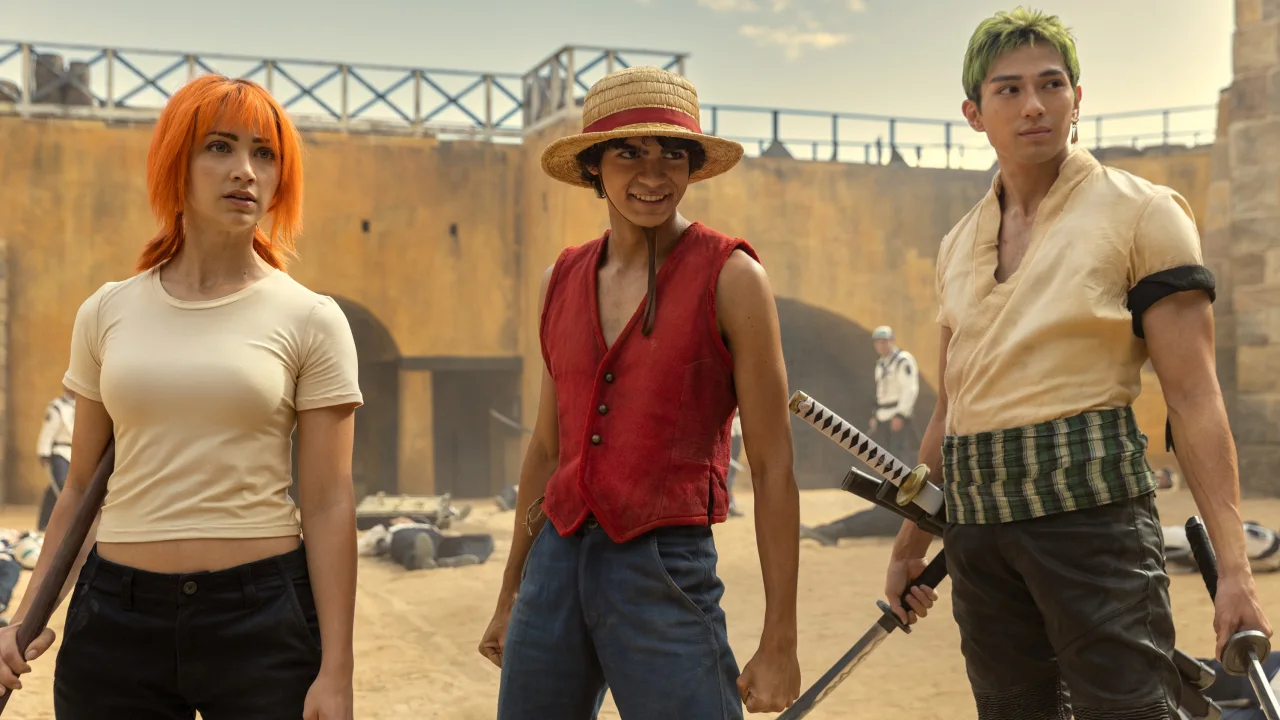When beloved long-standing narratives transition to a different medium, they often find themselves in a delicate balancing act, caught between the scrutiny of devoted fans (who might resist changes aimed at introducing the story to newcomers) and the potential confusion of newcomers (who could struggle with the original material despite any adaptations). However, the new live-action rendition of One Piece, a Japanese comic series with a rich history, now brought to life with flesh and blood, might just strike a chord with both these distinct groups. Enthusiastic fans of the previous versions might be captivated by the peculiar journey of seeing the eccentric content translated into reality, while casual Netflix viewers intrigued by an extraordinary adventure-fantasy series centered around pirates and superpowers might revel in its novelty. It’s those who fall between these extremes that could find themselves puzzling over the screen.
In its broader essence, One Piece shares some elements with the Pirates of the Caribbean films. The story follows a group of likable outlaws on a quest for a unique treasure that bestows the title of King of the Pirates on its discoverer. Throughout their journey, they are pursued by rival pirates and somewhat corrupt marines. However, Monkey D Luffy (Iñaki Godoy) is more akin to a character from VeggieTales than the likes of Jack Sparrow. Luffy is a cheerful and wide-eyed dreamer with stretchy limbs who aspires to be a pirate captain and king without resorting to theft or terror. He’s joined, albeit reluctantly, by swordmaster Roronoa Zoro (Mackenyu) and cunning thief Nami (Emily Rudd), whose backstories unfold during the eight-episode season.
In other One Piece adaptations, like the recent movie “One Piece Film: Red,” Monkey D Luffy’s energetic animation amplifies his comedic charm, especially with his unique stretching abilities. However, in this live-action version, the CGI portrayal of his powers looks less polished, and Godoy’s performance emphasizes Luffy’s innocent and boyish qualities to the point where his usual smirk becomes somewhat one-dimensional.
Godoy’s acting style is part of a broader inconsistency in the cast’s performances. Some actors fully embrace the exaggerated nature of live-action cartoons, while others adopt a more understated young adult tone. For example, Mackenyu and Rudd downplay their potential flamboyance through their colorful hairstyles, creating a contrast to Godoy’s boundless enthusiasm. Meanwhile, supporting characters sometimes exhibit exaggerated reactions reminiscent of a Terry Gilliam production.
The show’s stylistic approach mirrors this blend of over-the-top and reserved performances, with a woozy and off-kilter Gilliam-esque sensibility. Fish-eye lenses and frequent handheld low-angle close-ups contribute to this distinctive visual style. While the show lacks the visionary impact of vintage Gilliam works, its audaciousness stands out among TV offerings. The clash between various acting styles and the series’ overarching creativity contends with the budget limitations of this particular adaptation. Some settings and details utilize this mishmash effectively, while others, like certain unconvincing sea battles, fall short.
As the season progresses, Luffy’s group expands to include equally enthusiastic characters like Usopp (Jacob Romero Gibson), a storyteller and marksman with a pirate heritage, and Sanji (Taz Skylar), an ambitious chef and martial artist whose origin story becomes a highlight later in the season. Following modern streaming trends, the first season dedicates significant time to setup, which could have been condensed into a longer pilot episode in the past. Consequently, the space for episodic adventures becomes limited, which is unfortunate given the ensemble’s youthful energy and the show’s general eccentricity, which would suit a quest-based format.
As One Piece attempts to weave its diverse elements into a broader thematic narrative, it addresses the older generation’s reluctance to relinquish power to the younger one. However, the show’s exploration of this theme, combined with its kid-friendly focus on the importance of pursuing dreams, comes across as somewhat simplistic. Comparatively, “One Piece Film: Red” is stranger and more frenetic, yet within its chaos lies a more emotionally resonant experience. The discrepancy in villains could play a role here; the antagonist in “Red” possesses deep empathy and is more misguided than masterful, whereas one of the ongoing antagonists in the Netflix series is a self-disassembling pirate named Buggy the Clown. Despite occasional lost-in-translation moments of whimsy, there’s an odd charm in One Piece’s conceptual quirkiness and its unapologetic optimism, even when the execution falls short. To label it truly exceptional would be a stretch worthy of Monkey D Luffy’s elastic limbs, but to dismiss it as uninteresting would be an unfair judgment.
“One Piece” is now available for streaming on Netflix.

